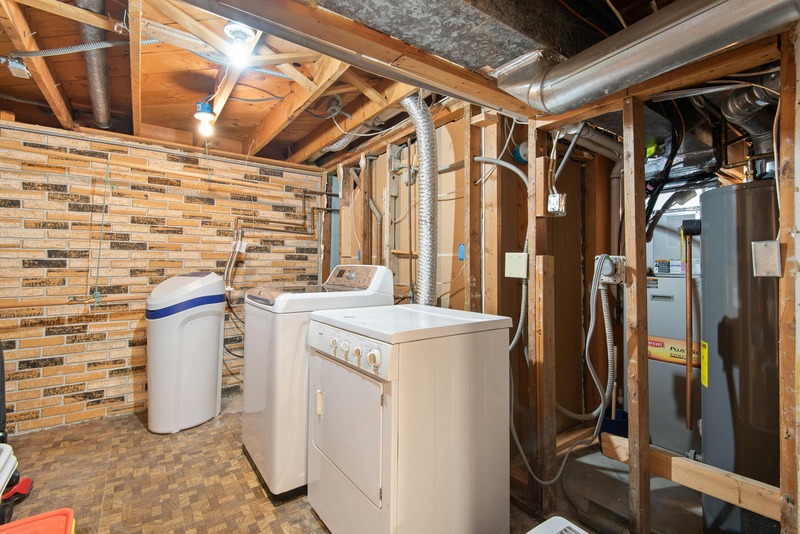
Average Electricity Cost for Small Business: Are You Overpaying?
See the average electric bills for various industries and find out if your business can save on its electric bills.
In this article:
- Typical Electricity Usage of Common Business Devices
- Average Electricity Cost for Small Businesses
- Average Electric Bills for Grocery Stores
- Average Electric Bills for Gas Stations
- Average Electric Bills for Hospitals & Medical
- Average Electric Bills for Hotels
- 5 Tips to Lower Your Business Electric Bills
- FAQs
- Recent Posts
Average electric bills vary across industries and different types of businesses due to many important factors, including geographical location and energy usage. In fact, states with the most expensive utilities include Hawaii and Florida while New Mexico and Utah have some of the lowest utility bills in the country.
Energy cost estimates for businesses also depend on which electrical devices are being used to help run your business. From LED light bulbs and computers to heating and cooling systems and printers, these common appliances use energy differently and therefore come with varying average costs.
Typical Electricity Usage of Common Business Devices
| Device | Hours per Day | Power Use (Watts) | Price (kWh) | Cost Per Year |
|---|---|---|---|---|
| LED Light Bulb | 8 | 10 | $0.10 | $2.92 |
| Computers | 8 | 100 | $0.10 | $29.20 |
| Central A/C | 8 | 3500 | $0.10 | $1,022 |
| Refrigerator | 24 | 180 | $0.10 | $157 |
| Monitor | 8 | 75 | $0.10 | $21 |
| Printer | 0.33 | 40 | $0.10 | $0.48 |
Average Electricity Cost for Small Businesses
Knowing the average electricity costs for small businesses is essential for effectively managing expenses. For example, a midsize grocery store might spend around $160,000 annually, while gas stations could be looking at about $24,000 per year. Understanding these averages can help business owners assess their own energy expenses and optimize costs. Let's explore the average energy costs of different types of small businesses.
Average Electric Bills for Grocery Stores
Estimated Annual Electricity Cost: $160,000
While energy needs like ventilation, cooling, and cooking contribute to a typical grocery store’s electricity usage, refrigeration and lighting make up more than 50% of total energy consumption. According to Energy Star, grocery stores spend approximately $4 per square foot on about 50 kWh of electricity and 50 cubic feet of gas every year. That translates to a $160,000 electric bill for a midsize grocery store that occupies roughly 40,000 square feet.
Average Electric Bills for Gas Stations
Estimated Annual Electricity Cost: $160,000
Gas stations have evolved with the needs of their customers and offer more than just different types of fuel these days. Modern gas stations are often outfitted with charging stations for electric cars as well as convenience stores that sell food and drinks. With these additional products and services, utility needs have also evolved to include water, electricity, and lighting — for both efficiency and safety purposes. According to Gas Stations USA, electric bills for gas stations vary but tend to hover around $2,000 per month, or $24,000 per year.
Average Electric Bills for Hospitals & Medical
Estimated Annual Electricity Cost: $4,000 - $160,000
Average energy bills for physicians’ offices cost about $2,000 per month, while monthly utility bills can be exponentially much higher for hospitals. Given the amount of electricity required to power the electrical equipment and other tech-enabled devices used to test and treat hospital patients, electric bills are some of the largest expenses for hospitals. At facilities that participated in a 2018 survey initiated by Grumman/Butkus Associates, a firm of energy efficiency consultants and sustainable design engineers, energy usage varied broadly.
However, they reported that, “Several hospitals were consuming more than 45 kWh/sf/year in electrical energy, compared with a mid-range of about 30 kWh/sf/year. A few survey participants squeaked in at less than 18 kWh/sf/year. The wide differences in usage mean that some of our participants are paying well over $4/sf/year for electrical energy, while many are getting by at less than $2.50 and a few at less than $1.50.”
Average Electric Bills for Hotels
According to Energy Star, full-service U.S. hotels spend an average of $2,196 per available room each year, which accounts for 6% of their total operational costs. That figure is based on the benchmark that states these businesses spend an average of $1.05 per square foot on electricity each year. Because comfort, cleanliness, and convenience are important to the hospitality industry’s target market, hotels are often resistant to implementing conservation measures that might be perceived as cutting costs at the expense of the guests’ experience. This has resulted in slow year-over-year energy cost reductions for the hotel industry at large.
5 Tips to Lower Your Business Electric Bills
- Business Energy Audits: Some utility companies provide free energy audits to businesses upon request. Understanding your business’ power consumption can go a long way in saving money and reducing its impact on the environment.
- LED Lights: These lights are powered by light-emitting diode technology that helps lower energy consumption by up to 75% while delivering long-term light quality. According to the Department of Energy, today’s LED lights can also last up to 25 times longer than incandescent bulbs.
- Programmable Thermostats: As long as you have a Wi-Fi connection, you can set and adjust your business’ thermostat to ensure optimal temperatures for your in-house teams while they work. As one of the most energy-efficient commercial systems, programmable thermostats will save both money and energy for your business.
- Commercial Renewable Energy Plans: Clean energy plans help businesses reduce their carbon footprint while contributing to their bottom line. From commercial solar and wind plans to carbon offsets and other eco-friendly options, renewable energy plans offer reliable energy sources to power your business’ electricity needs.
- Electrical Devices That Are Not In Use: Turn off devices that are not in use to save both energy and money. Printers, computers, and monitors should be adjusted to “sleep mode” at best to prevent costly bills for electricity that’s not being used. Low-load devices can benefit from being charged on a power strip that allows you to turn them all off with just one switch.
No matter what kind of business you have or how long you’ve been operating, it’s important to understand average business electric bills to hedge unforeseen costs that drive up your energy bills.
At EnergyBot, we analyze and track business electricity rates across industries. Contact us to learn more about average business electric bills for different types of businesses, or how we can help save your business energy and money today. But one size does not fit all.
FAQs
How much do small businesses spend on electricity?
Small businesses typically allocate between $500 and $2,000 monthly for electricity expenses. However, the exact amount varies based on factors such as the business's size, location, and energy efficiency practices. For example, manufacturing operations tend to incur higher costs compared to office-based businesses. It's prudent for business owners to assess their energy consumption patterns and explore energy-saving strategies to optimize costs.
Written by Thad Warren
Thad is a native Texan who has worked in the energy industry for just over 5 years.
Connect
Recent Posts
What is considered a utility bill? Your Guide to Essential Services
Utilities help to keep your daily life comfortable and your home operable. So, what is considered a utility bill? And, what is the average cost of your monthly utility bill? In this guide we’ll break down what types of essential services make up your utility bills, how to read your bill, and strategies for reducing different utility bills.
March 2025

4 minutes

Creating Your Home Buying Budget: How much house can you afford?
Before you begin the home buying process, it’s important to take the time to understand how to budget to buy a home. In the time leading up to closing you’ll need to make smart financial decisions and save strategically for your home buying budget.
March 2025

6 minutes

Why You Need to Create a Budget: Everything You Need To Establish a Home Budget
Struggling to manage your finances? Learn how creating a household budget can help you take control of your money, reduce stress, pay off debt, and save for the future.
March 2025

6 min




